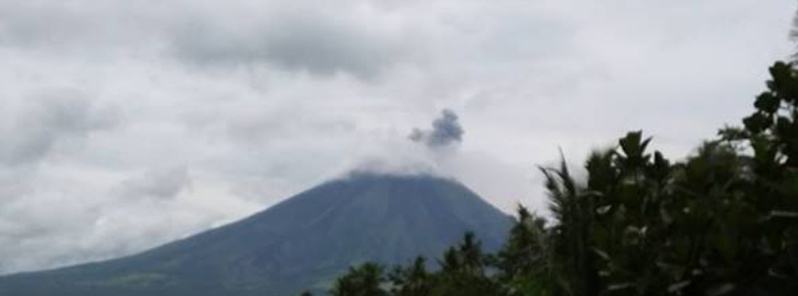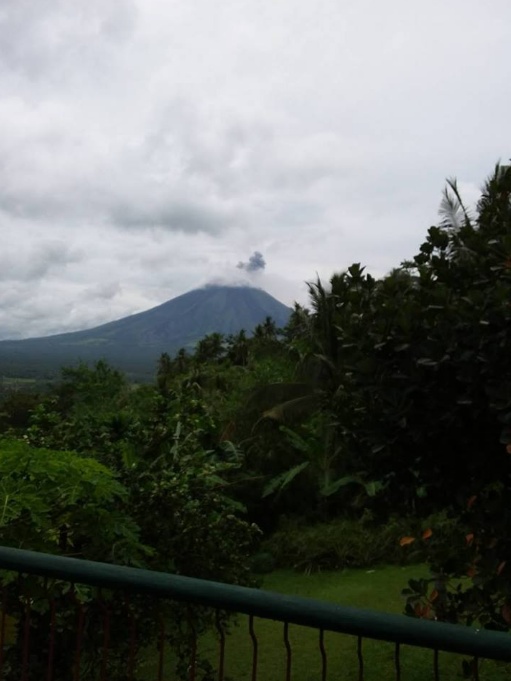Moderately strong phreatic eruption at Mayon volcano, Philippines

A phreatic eruption took place at Mayon volcano, Philippines at 04:34 UTC (12:34 local time) Sunday, July 1, 2018. A light gray ash column reached an altitude of about 500 m (1 640 feet) above the crater.
Mayon’s seismic monitoring network did not detect any volcanic earthquake during the past 24 hours, PHIVOLCS said 00:00 UTC today.
Moderate emission of white steam-laden plumes that crept downslope before drifting northeast, north-northwest, and east-northeast was observed during the day.
Fair crater glow from the summit could be observed at night.

Short-lived degassing event at Mayon at 04:34 UTC, July 1, 2018. Credit: DOST-PHIVOCLS
Sulfur dioxide (SO2) emission was measured at an average of 1 287 tonnes/day on June 20, 2018. Precise leveling data obtained on April 2 to 14, 2018 indicate inflation of the edifice relative to March 22 to 29, 2018, while electronic tilt data show sudden slight inflation of the mid-slopes beginning May 5, 2018.
Medium-term ground deformation data, however, show that the edifice is still deflating consistent with the decline in unrest but is still inflated relative to 2010 baselines.
Alert Level 2 currently remains in effect over Mayon Volcano. This means that Mayon is at a moderate level of unrest.
PHIVOLCS reminds the public that sudden explosions, lava collapses, pyroclastic density currents or PDCs and ashfall can still occur and threaten areas in the upper to middle slopes of Mayon. The agency recommends that entry into the 6 kilometer-radius (3.7 miles) Permanent Danger Zone or PDZ and a precautionary seven 7-radius (4.3 miles) Extended Danger Zone or EDZ in the south-southwest to east-northeast sector, stretching from Anoling, Camalig to Sta. Misericordia, Sto. Domingo must be strictly prohibited.
People residing close to these danger areas are also advised to observe precautions associated with rockfalls, PDCs and ashfall.
Active river channels and those perennially identified as lahar prone areas in the southern and eastern sectors should also be avoided especially during bad weather conditions or when there is heavy and prolonged rainfall.
Civil aviation authorities must advise pilots to avoid flying close to the volcano’s summit as airborne ash and ballistic fragments from sudden explosions and PDCs may pose hazards to aircrafts, PHIVOLCS scientists said.
Featured image: Short-lived degassing event at Mayon at 04:34 UTC, July 1, 2018. Credit: DOST-PHIVOCLS

Commenting rules and guidelines
We value the thoughts and opinions of our readers and welcome healthy discussions on our website. In order to maintain a respectful and positive community, we ask that all commenters follow these rules.